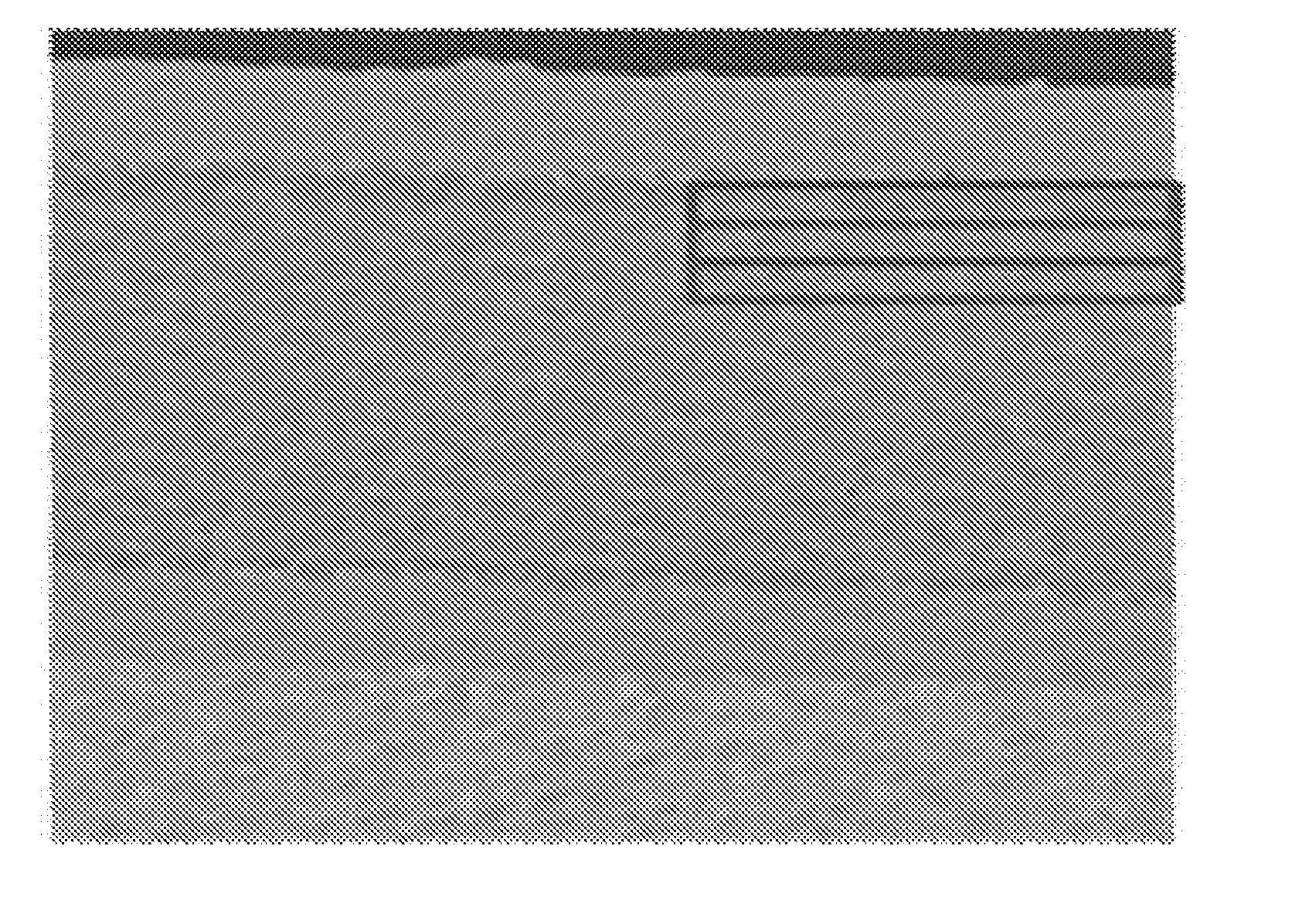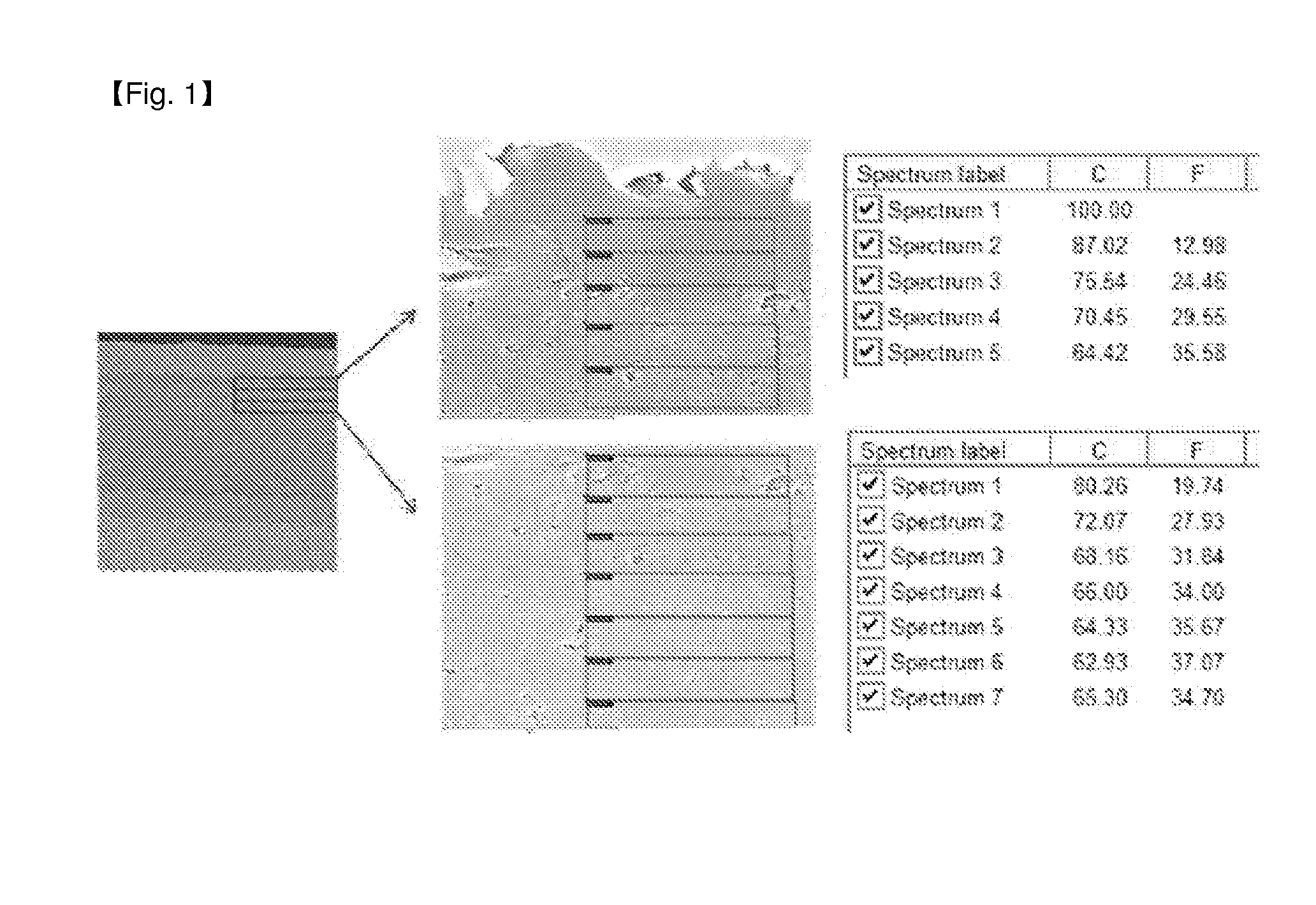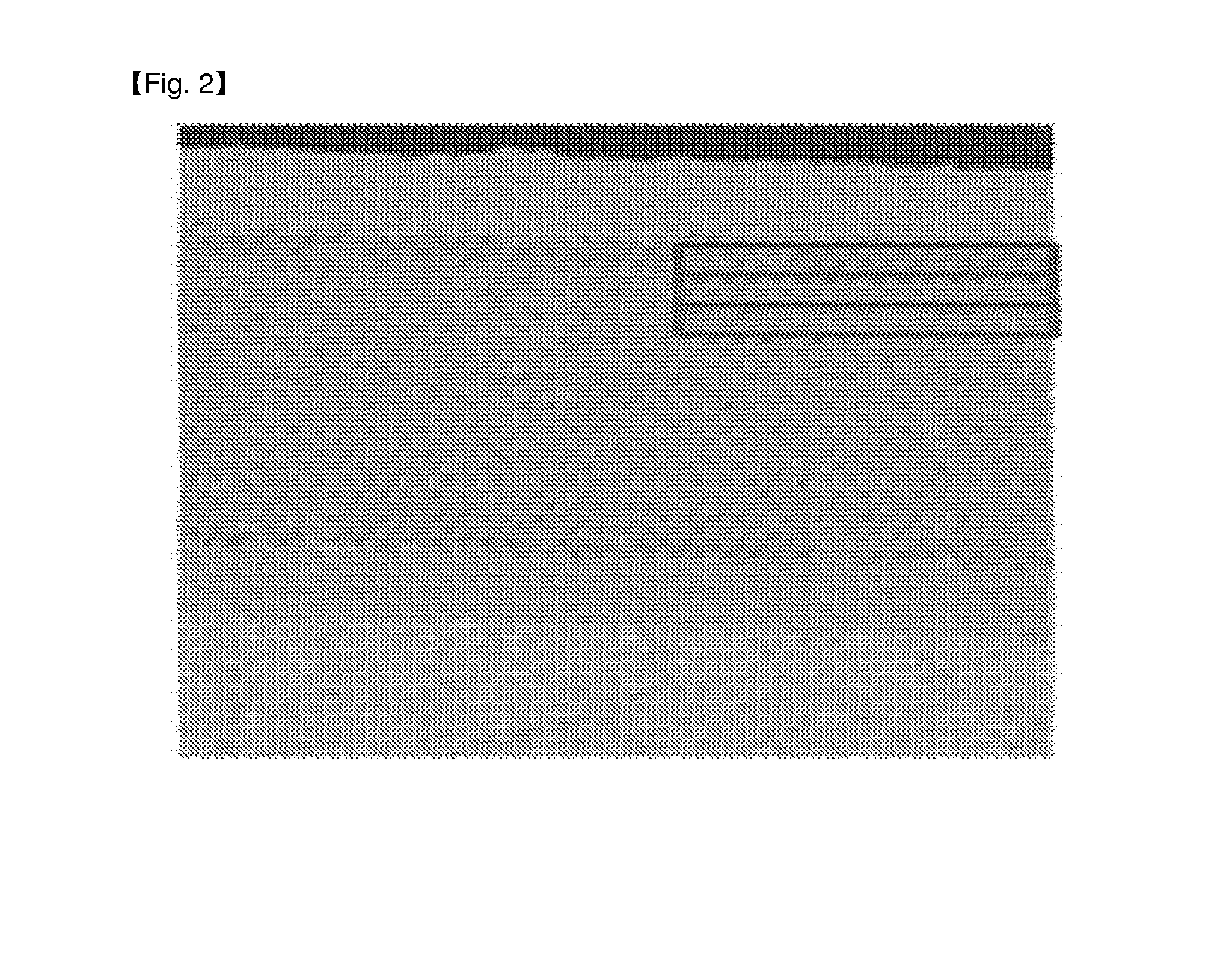Flexible metal laminate
a metal laminate and flexible technology, applied in the field of flexible metal laminates, can solve the problems of insignificant improvement, thermal plasticity, and the preparation of copper foil laminates into thin films, and achieve the effects of low dielectric constant, low moisture regain, and high elasticity
- Summary
- Abstract
- Description
- Claims
- Application Information
AI Technical Summary
Benefits of technology
Problems solved by technology
Method used
Image
Examples
preparation examples
Preparation of Polyamic Acid Solution
preparation example 1
Preparation of Polyamic Acid Solution (P1) Including Fluororesin
[0073]After filling nitrogen in a 1 L polyethylene (PE) bottle and adding 765 g of dimethylacetamide (DMAc), 219 g of polytetrafluoroethylene (PTFE) micro-powder (particle size: 0.1 to 2.0 μm), 10.95 g of a polyester-based polymer [acid value: 26 mg KOH / g, base equivalent: 1200] as a dispersing agent, and 765 g of beads having a diameter of 2 mm thereto, the resultant mixture was stirred in a high speed ball milling apparatus so as to disperse PTFE. After putting 80 g of the solution in which said PTFE was dispersed, 107 g of dimethylacetamide, 1.852 g of 3,4,3′,4′-biphenyltetracarboxylic dianhydride, 12.355 g of pyromellitic dianhydride, 5.453 g of 2,2′-dimethyl-4,4′-diaminobiphenyl, 12.340 g of 2,2′-bis(trifluoromethyl)-4,4′-diaminobiphenyl in a 500 mL round bottom flask, the mixture was stirred with a stirrer and reacted at 50° C. for 10 hours while streaming nitrogen therein so as to obtain a polyamic acid solution ...
preparation example 2
Preparation of Polyamic Acid Solution (P2) Including Fluororesin
[0074]After filling nitrogen in a 1 L polyethylene (PE) bottle and adding 765 g of dimethylacetamide (DMAc), 219 g of polytetrafluoroethylene (PTFE) micro-powder (particle size: 0.1 to 2.0 μm), 10.95 g of a polyester-based polymer [acid value: 26 mg KOH / g, base equivalent: 1200] as a dispersing agent, and 765 g of beads having a diameter of 2 mm thereto, the resultant mixture was stirred in a high speed ball milling apparatus so as to disperse PTFE. After putting 73 g of the solution in which said PTFE was dispersed, 115 g of dimethylacetamide, 11.609 g of pyromellitic dianhydride, 17.391 g of 2,2′-bis(trifluoromethyl)-4,4′-diaminobiphenyl in a 500 mL round bottom flask, the mixture was stirred with a stirrer and reacted at 50° C. for 10 hours while streaming nitrogen therein so as to obtain a polyamic acid solution (P2) having viscosity of about 100,000 cps.
PUM
| Property | Measurement | Unit |
|---|---|---|
| Temperature | aaaaa | aaaaa |
| Temperature | aaaaa | aaaaa |
| Temperature | aaaaa | aaaaa |
Abstract
Description
Claims
Application Information
 Login to View More
Login to View More - R&D
- Intellectual Property
- Life Sciences
- Materials
- Tech Scout
- Unparalleled Data Quality
- Higher Quality Content
- 60% Fewer Hallucinations
Browse by: Latest US Patents, China's latest patents, Technical Efficacy Thesaurus, Application Domain, Technology Topic, Popular Technical Reports.
© 2025 PatSnap. All rights reserved.Legal|Privacy policy|Modern Slavery Act Transparency Statement|Sitemap|About US| Contact US: help@patsnap.com



